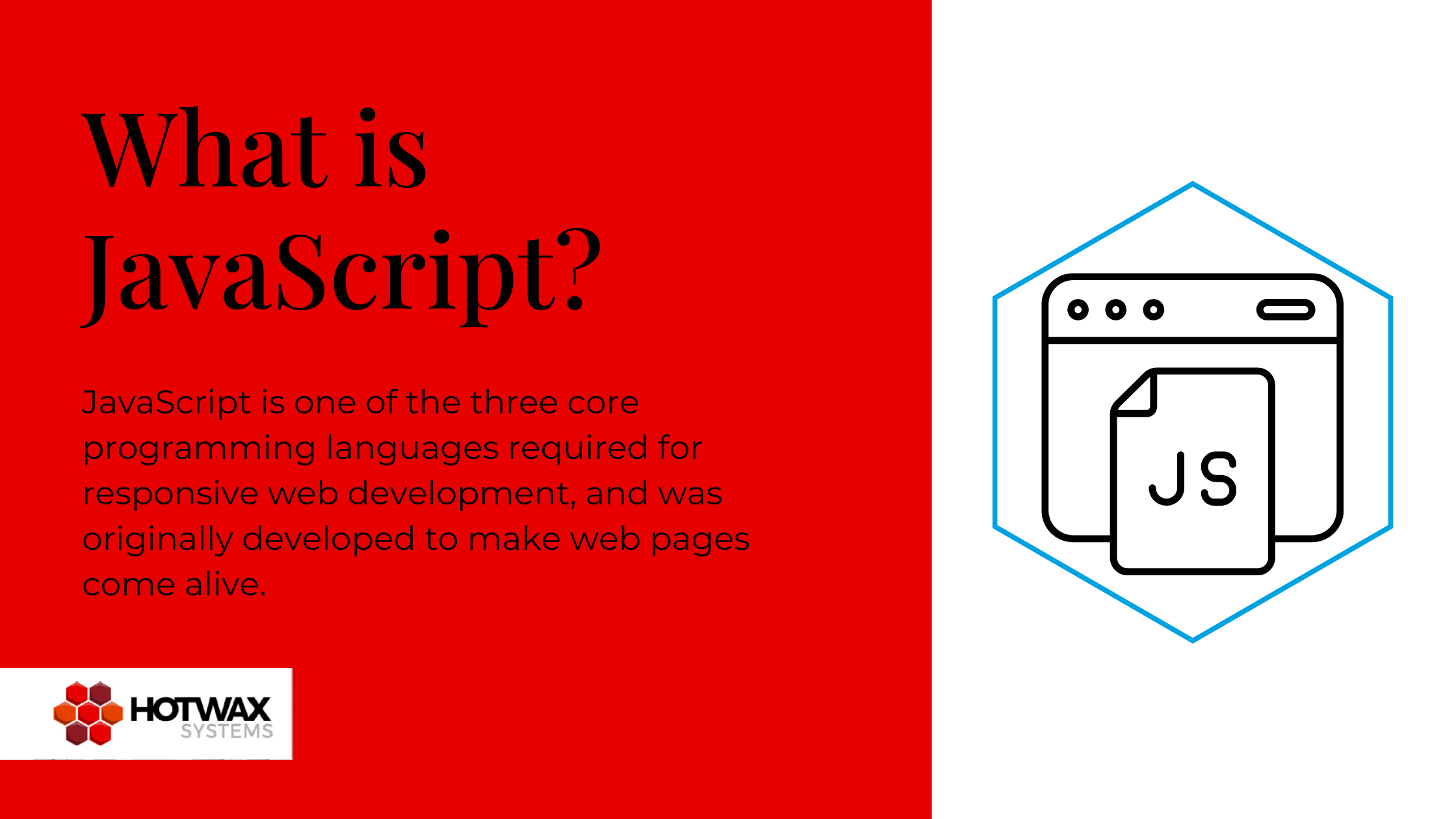What is JavaScript and why is it used?
JavaScript is one of the three core programming languages required for responsive web development, and was originally developed to make web pages come alive.
Traditional web pages built with HTML and CSS are static; JavaScript enables these pages to become dynamic, interactive, and much more engaging. For instance, JavaScript can be used to check user inputs in forms, create interactive maps, animate graphics, and handle multimedia.
JavaScript is also used by developers for building server applications, games, and mobile apps. Because JavaScript can be used to develop both the front and back ends, it simplifies things since the same language can be used across the full stack of the development process.
What is the main advantage of JavaScript?
The primary advantage of JavaScript is its ability to run on nearly any modern web browser. This capability makes it incredibly useful for creating responsive and user-oriented web applications and pages.
Because JavaScript executes on the user's computer, it allows for faster interaction and immediate feedback in the browser, without the need to communicate with the server for every action.
Additionally, because JavaScript can be used for both client and server side programming, it has a universal appeal and multidimensional applicability that has made it an essential programming language; JavaScript is literally everywhere.
What are the downsides of JavaScript?
Despite its versatility and wide adoption, JavaScript has two main drawbacks:
- Security: JavaScript code is executed on the user’s device, which can sometimes lead to security vulnerabilities that need to be managed, especially if the code is not properly written or sanitized.
- Browser dependency: Different browsers can interpret JavaScript slightly differently, which can lead to inconsistencies in user experience and design.
A brief history of JavaScript
JavaScript was created in 1995 by Brendan Eich while he was an engineer at Netscape. It was originally developed under the name Mocha, then LiveScript, and finally JavaScript.
This new language was designed to make web development easier and more appealing, and was officially adopted by the ECMA (European Computer Manufacturers Association) in 1997 as ECMAScript, which is the standard that continues to guide JavaScript’s evolution today.
What is the difference between HTML and JavaScript?
HTML is used to create and design web pages. It handles the structure and layout of web content and is the most basic building block of the web. On the other hand, JavaScript is used to manage the behavior of different elements on a web page.
While HTML alone can create static pages, JavaScript adds dynamic elements and interactivity that HTML by itself cannot achieve. Both have easy to understand syntax and together make up two thirds of the foundation of responsive web design.

What’s the difference between Java and JavaScript?
Despite the similarity in their names, Java and JavaScript are distinct languages used for different purposes. Java is a general-purpose, object-oriented programming language that runs on a virtual machine or browser and is used primarily for Android app development and desktop applications.
JavaScript, as previously discussed, is primarily used for interactive web applications and pages. Whereas JavaScript is initially easier to learn and use, Java’s more rigid structure is said to be more stable.

What’s the difference between JavaScript and Python?
JavaScript is used for client-side scripting of web pages, and on the server-side via Node.js. Python is used for a wide range of applications, including web development, data analysis, artificial intelligence, scientific computing, and more. Both are popular, interpreted languages, but they serve different purposes.
Because Python’s syntax is so similar to spoken language, it’s a favorite among scientists, which has made it really popular for things like data analysis and scientific computing, whereas JavaScript is essential for web development.

In conclusion, JavaScript's capability to interact with HTML and CSS, its simplicity, and its wide support across all modern web browsers and near ubiquitous use have made it an indispensable language in the field of web development.


